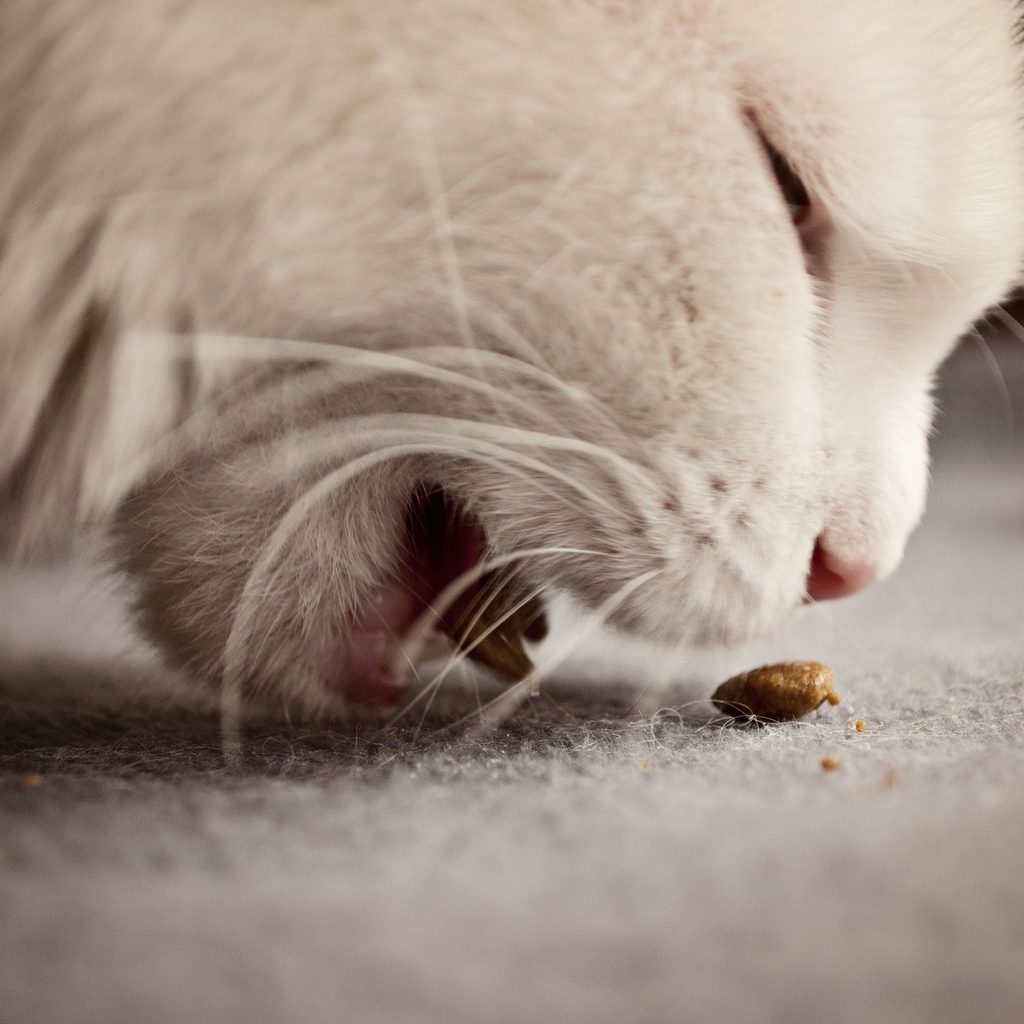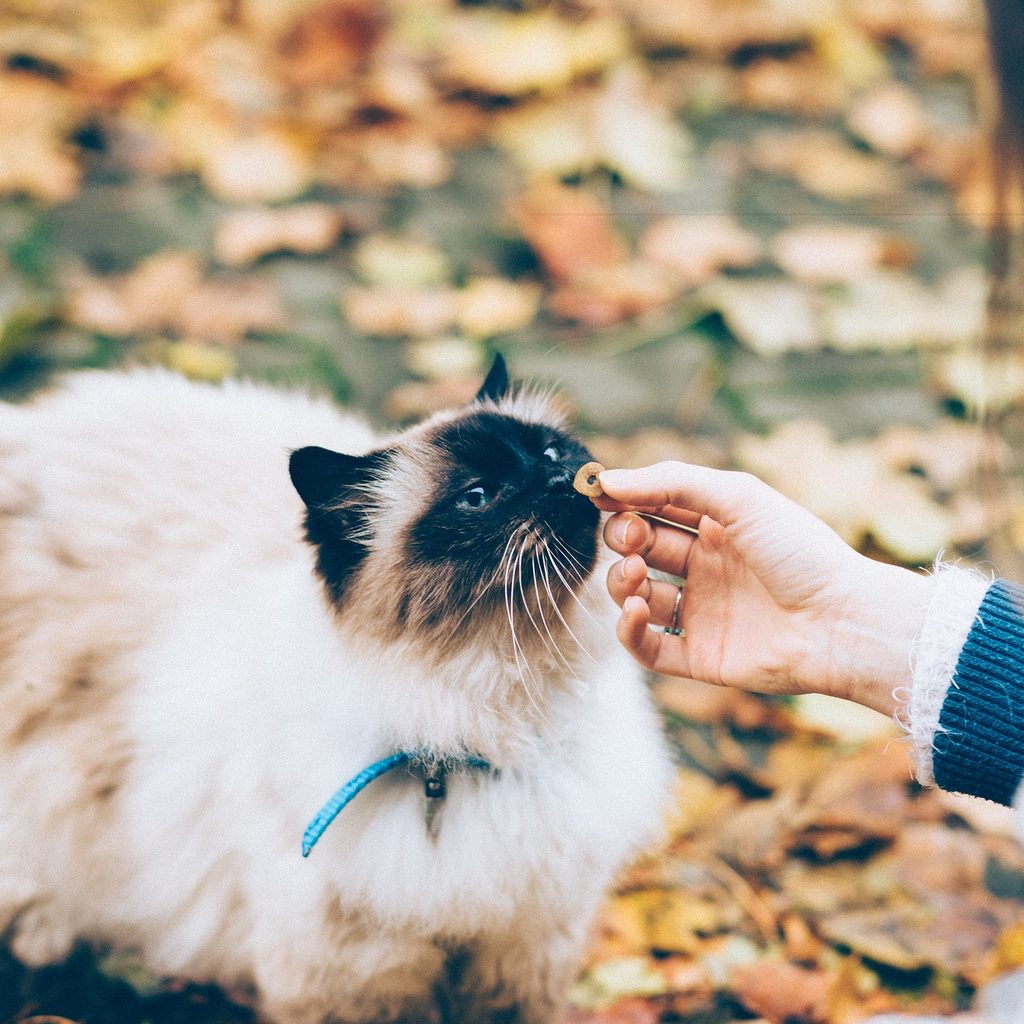If you’re looking for Halloween treats for cats, you’ll find that there aren’t many store-bought options. That’s OK, though — homemade cat treats are just as good, and you can make cat treats with fun Halloween themes. The following three recipes are all tasty and feature common ingredients you can find in grocery stores. The recipes are easy to prepare, and they all give you a chance to make festive Halloween shapes. If you have a little extra time, consider making these fun (and yummy) Halloween-themed treats for your cat for a special holiday celebration that the two of you can enjoy together.

Carrot-and-pumpkin treats
You may have carved jack-o’-lanterns and maybe even made baked pumpkin seeds, but now your cat can enjoy some tasty pumpkin flavor, too. These treats combine delicious carrot and pumpkin, making them perfect for the Halloween season.
In addition to grated carrot and canned pumpkin, you’ll need tuna, an egg, olive oil, a little dried catnip, and oat flour. The ingredients are common, and you probably have most of them in your kitchen already.
It’s easy to make the treats. You need to combine all the ingredients to create a dough, then roll it out and cut it with a cookie cutter. Consider looking for a Halloween-themed mini cookie cutter to make the treats extra special for the holiday. Then, pop them in the oven to bake and your cat will be able to give them the taste test.
Easy kitty treats
These easy kitty treats are super simple to make. They’re full of quality ingredients like tuna, pumpkin, and even catnip for extra taste. You can blend all the ingredients together in a blender or food processor, saving you time.
Once the dough is ready, you can roll it out and cut out shapes with a cookie cutter. Alternatively, you can roll the treats into small balls or press them into a silicone mold. Consider looking for a Halloween-themed mold to make the treats even more fun for your cat.
After you’ve prepared the treats, you’ll need to bake them. The finished treats will keep for a week in a sealed container.
Chewy cat treats
Each Halloween, you get to enjoy all sorts of chewy, delicious candies. Now, your cat can feast on special chewy cat treats of his own.
This recipe features common ingredients that you probably already have in your house. In addition to ingredients like cooked white rice and an egg, you’ll need a jar of meaty baby food (such as chicken and brown rice) or canned wet cat food. Look for a flavor, like chicken or turkey, that’s your cat really likes.
You’ll mix the ingredients together, spread them onto a prepared baking sheet, and bake them until the treats are almost cooked through. Once they’re cool enough to handle, you can slice the dough into smaller pieces before putting them back in the oven to cook a little more. Think about fun Halloween shapes that you can cut out, like ghosts or bats.

Tips for successful homemade cat treats
When you make cat treats at home, you can give your cat goodies that feature his favorite ingredients. You can substitute many of the meats in these recipes with your cat’s favorite meat. You can even mix in a little extra catnip to make the treats super tasty and appealing to your cat. That’s the beauty of homemade treats — you can make them to appeal to your cat’s taste buds and food preferences.
When making homemade treats, be sure you’re using the right ingredients that are safe for your cat. Many recipes include canned pumpkin, and it’s important to double-check that you’re using only canned pumpkin, and not pumpkin pie filling, which has extra spices and sugar or other sweeteners. Feed only a few treats to your cat each day. Sudden diet changes can upset your cat’s digestive system, and it’s important that he doesn’t fill up on treats so he still gets the nutrition he needs out of his cat food. Cooking for your cat at home is a wonderful and caring way to do something special for your kitty, and it makes a great way to celebrate Halloween together, too.


